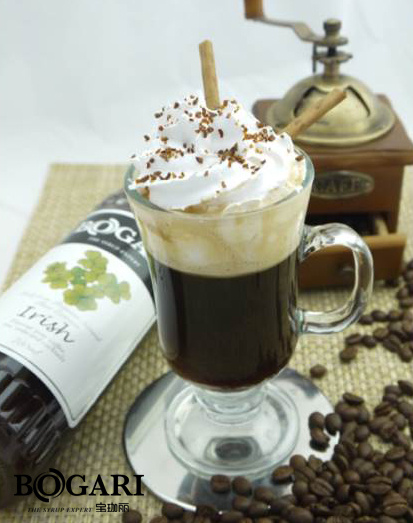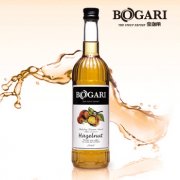Coffee Taste Tour teaches you how to choose coffee beans-Latin America
Mexico Mexico
The most famous coffee beans in Mexico are mainly from Coatepec, Oaxaca and Chiapas/Tapachula. The acidity is lively, bright and mild, delicate flavor, medium consistency, is a very good choice for formula beans, deep baking performance is also good. In addition, Mexican coffee from some highland areas has a fuller consistency and stronger acidity, which is a bit close to the well-performing Guatemalan coffee beans.
Guatemala Guatemala
High altitude hard beans (SHB,Strictly Hard Bean), the best performance of Guatemalan coffee, have very strong acidity, floral and fruity aromas, medium to full consistency and high complexity, and are the best representative of simple style. The most famous producing area in Guatemala is Antigua, while other regions such as Huehuetenango and San Marcos also produce high-quality coffee beans.

Unlike many other coffee-producing countries, Guatemala is very committed to growing Arabica coffee trees of traditional old trees, and has a large number of excellent manor and cooperative coffee beans.
Honduras Honduras
Honduras is not a well-known coffee producer, but the best-performing Honduran coffee beans have a sweet, low-key, full consistency and excellent rich taste.
El Salvador El Salvador
Salvadoran coffee beans have mild acidity, delicate flavor and medium consistency. Its stability, sweetness and balance are very pleasing, and it is an excellent formula bean.
Nicaragua Nicaragua
The best Nicaraguan coffee beans generally come from Matagalpa, Jinotega and Segovia, with moderate acidity, plump and low-key, round and soup-like consistency, and rich in diversified fruit tonality.
Costa Rica Costa Rica
The best quality Costa Rican coffee beans are generally from the extremely hard bean (SHB) grade, its beans are large, clear flavor, bright and strong acidity, full consistency. Costa Rican coffee beans are mainly good at aftertaste and strong flavor, but they are not particularly outstanding in terms of complexity and variability. Costa Rica produces a lot of excellent manor coffee beans, including the famous La Minita Manor.
Panama Panama
Panama's boutique coffee beans are mainly concentrated in Boquete, near the Costa Rican border, which lies on the slopes of Mount Baru. Most Panamanian boutique coffee beans have a delicate, sweet and pleasing flavor, medium consistency, lively and delicate acidity, and some even have floral and fruity flavors. In addition, some of the stronger coffee beans have acidity as strong as red wine, and the best performers can even keep pace with Guatemalan and Costa Rican coffee beans.
Jamaica Jamaica
Authentic Jamaican Blue Mountain Coffee is grown at an altitude of more than 3000 feet above sea level in the Blue Mountains. It is full of consistency, moderate acidity, high complexity and a sense of balance. But sometimes it may destroy all the previous advantages with a faint musty smell.

In addition, there are a small number of Jamaican coffee beans grown at low elevations, which can be slightly identified by their names, such as Blue Mountain Valley Coffee, Jamaican Alpine Coffee and so on.
Haiti Haiti
The typical flavor of Haitian coffee beans treated with water is sweet, soft and medium consistency, but it is often slightly moldy or overfermented due to mistakes in the treatment and drying process.
Columbia Colombia
In the Columbia coffee bean rating system, Supremo is the highest marketing grade, while Excelso is the smaller, more common grade. These large Colombian coffee beans have a balanced, acidity, unique flavor and relatively full consistency, sometimes with a hint of red wine or an admirable fruit flavor.

Brazil Brazil
The best performers in Brazilian coffee have mild, sweet, medium consistency and relatively soft acidity, which make Brazil 's Arabica bean has always been favored by lovers of Italian concentrated and deep-roasted coffee beans.

There are three main ways to treat Brazilian manor coffee beans:
1. Washing treatment
2. Drying / natural treatment
3. Natural fermentation of mucous membrane.
Typically, washed coffee beans have the brightest, clearest taste and the most unique acidity of all Brazilian coffee beans, while medium-and upper-quality dried Brazilian coffee beans have fuller consistency and higher complexity, but lower acidity. The flavor of Brazilian coffee made by natural fermentation of mucous membrane is between the first two: the flavor is clear and fruity, the balance is good, and the acidity is delicate and rich.
Important Notice :
前街咖啡 FrontStreet Coffee has moved to new addredd:
FrontStreet Coffee Address: 315,Donghua East Road,GuangZhou
Tel:020 38364473
- Prev

Homemade hazelnut coffee liqueur at home
Coffee sweet wine is all the rage in cocktails, while coffee sweet wine with hazelnut aroma makes this liqueur more unique. Raw material: Baogali hazelnut flavor syrup 30ml P.r.o. Espresso 60ml rum 200ml Love Yellow Sugar 200g Hot Water 150ml Vanilla beans 2 ways: put 200g Love Yellow Sugar in a container and slowly melt it over low heat
- Next

Love coffee must see to teach you the correct choice of bean grinder
Bean grinder for single product: bean grinder for single product is divided into ghost teeth and flat knife. The coffee powder particles ground by ghost teeth are closer to round shape, and the proportion of coarse powder and fine powder is more uniform, so the coffee taste is cleaner, the flavor is more three-dimensional and full, but the machine price is higher. The coffee powder particles ground by flat knife are closer to polygonal or flaky, and it is easy to produce more fine powder. The cleanliness of the taste is slightly worse.
Related
- What is the meaning of lactic acid fermentation with coffee bean treatment?
- How to judge the state of foam by sound?
- How does the latte pull out the unicorn pattern? Come to get for a little trick to improve the flower pull!
- Will flower pulling affect the taste of the latte?
- Do you know the history of coffee?
- The difference between honey treatment and sun washing what is raisin honey treatment?
- What kind of milk can a novice use to make coffee foam to keep the foam longer? The correct method and skills of milking tutorial sharing
- Why do washed coffee beans taste sour? Flavor characteristics of washed Coffee
- Introduction to the skill of how to practice the size and height of water injection around the circle of hand-brewed coffee
- How do beginners practice coffee flower drawing from scratch?

